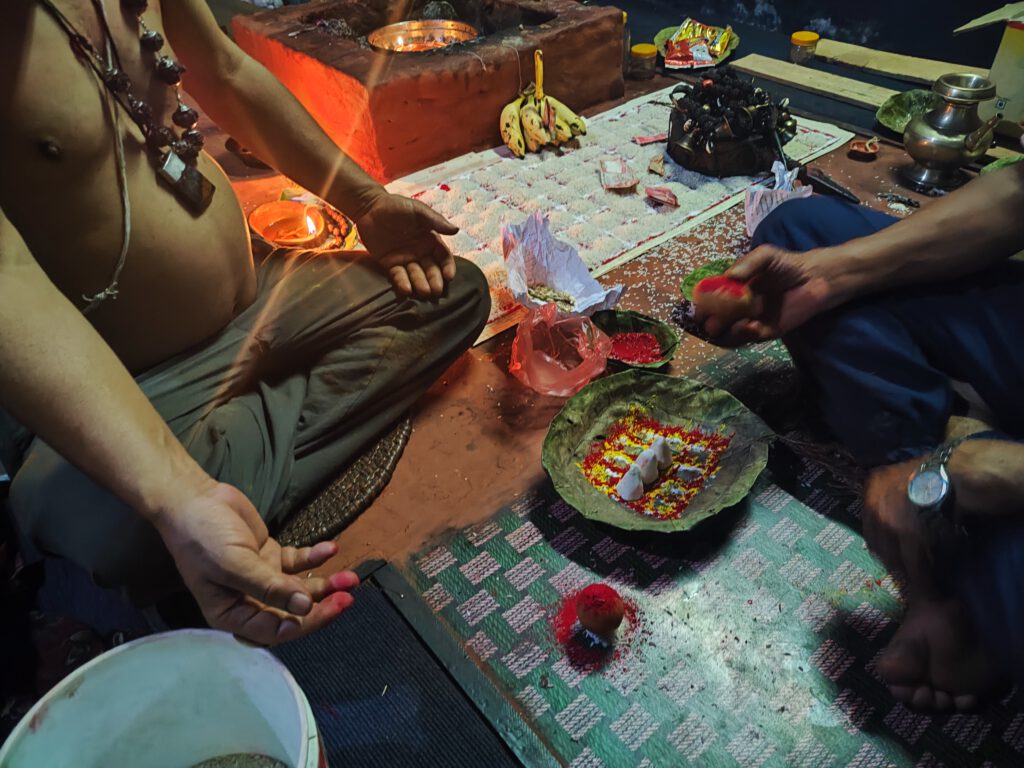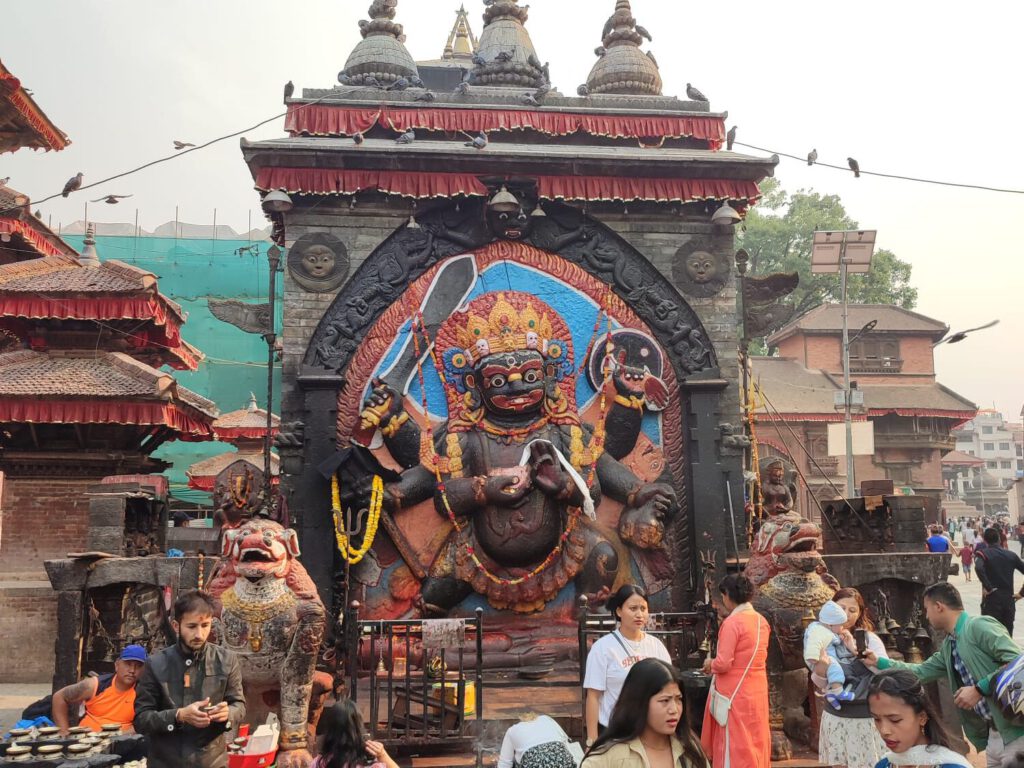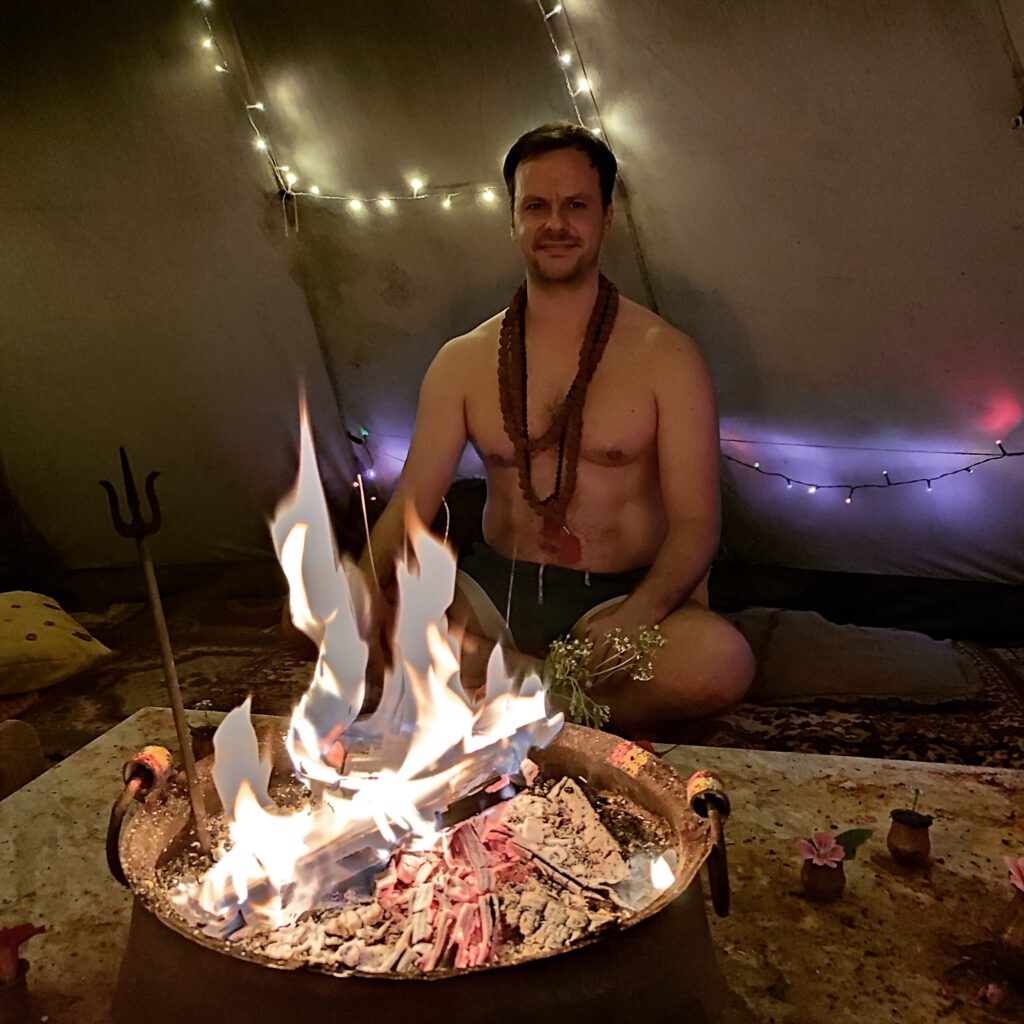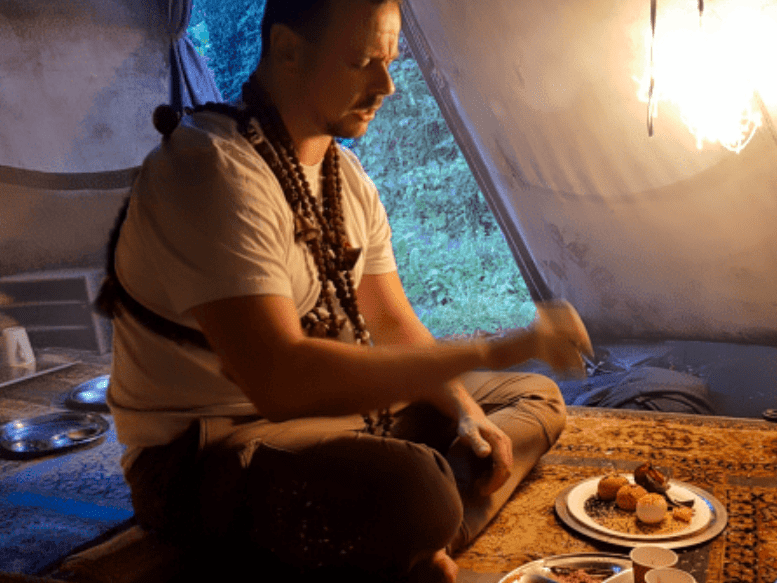What is a Shaman?
A shaman is a spiritual healer who acts as a mediator between the visible and invisible worlds. I am Sven Horn, a shaman in the Nepalese tradition, and I am writing here from my personal experience.
Shamans have accompanied mankind for a very long time, over many centuries and cultures. It is thought that the term ‘shaman’ itself comes either from Sanskrit (‘sramana’) or from the languages of Siberia; another interpretation sees the root of the word in “saman”, which means “to know” and refers to the deep wisdom of a shaman.
It is important to understand that the term ‘shaman’ and the practice of shamanism are often interpreted very broadly and diversely. In fact, there is no single, universal definition.
The first Shamans lived in Nature
The root of shamanism is nature. The first shamans learned everything through the energies of nature. This connection and respect for nature is common to all shamanic traditions worldwide.
The basis for shamanism is an animistic world view: the belief that all things in nature – mountains, rivers, plants, stones – are animated or are the abode of spirits. This world view allows the idea that:
The interconnectedness between humans and the animal world forms a basis
- Soul journeys are possible as a healing method
- The shaman acts as a mediator between the earthly and spirit worlds
- people can enter into personal relationships with nature beings
The concept of three worlds
In many shamanic traditions, three interconnected worlds are assumed:
- The underworld: the realm of ancestors, power animals and nature spirits
- The Middle World: Our everyday physical reality
- The Upper World: realm of high spiritual teachers and divine energies
Modern vs. traditional shamanism

Traditional shamanism was closely linked to the lifeworld and natural environment of the respective cultures. Shamans could not be regarded as the embodiment of a particular shamanistic religion, but fulfilled specific functions of their community.
Modern shamanism adapts ancient wisdom for people in Western societies. It is about:
- Individual spiritual development instead of community service
- Integration of different traditions
- Adaptation to modern living conditions
- Healing of problems caused by civilization
The functions of a shaman
Traditionally, a shaman took on a variety of roles that went far beyond pure healing. A shaman was part of a community and had many practical tasks. In the past, we humans lived in small, nature-loving communities. In these villages or clans, the shaman had a central role – not only as a healer, but also as a mediator between the visible and invisible world. He was responsible for the psyche of the community.
As the “spiritual leader” of the community:
- Doctor and healer for physical and mental ailments
- Fortune teller and dream interpreter for important decisions
- Guide for the dead during the transition to the afterlife
- Ceremony leader for important rituals
As a mediator between the worlds:
- Restoring the balance between man, nature and spirit
- Contact with ancestral spirits and spiritual helpers
- Communication with nature spirits and elemental forces
- Protection from negative influences and “harmful magic”
The shaman in traditional communities
Native American tribes still have shamans to this day to make contact with spirits and conduct ceremonies with tobacco or incense. In Asia too, shamans in China, the Philippines and Indonesia still play an important role today. In the Amazon region, for example in Peru, there are still traditional ayahuasca ceremonies and other ritual sessions for self-healing.
It is also important to emphasize that shamanism is not a purely male affair; women and people of all genders can also be shamans and fulfil this important role. Even in Northern Europe, before the spread of Christianity, female shamans often had a central role. In Europe, we know druids from the Celts and Germanic tribes.
A shaman is part of a community
The shaman heals illnesses through rituals, energy work or herbal medicine. He advises on important decisions, performs ceremonies, blesses the land or supports the hunt through spiritual guidance. A well-known example is the Native American rain dance, which is performed when the harvest fails.
Or he travels spiritually to other worlds to find out where new hunting grounds may be located. The work of a shaman therefore has nothing detached about it, but is geared towards life in a community and the practical benefits for people.

In Nepal, there is also the traditional worship of the gods. In Nepal, these are Shiva, Bhairava and Kali in particular. There is also the worship of the elements fire, water, earth, air and space (Akash).
In many civilizations, for example, the sun is a deity and is worshipped. This connection and respect for the sun makes it an ally during shamanic rituals, for example. This allows us to integrate energies that are close to us. This shows the connection with culture and nature in shamanism. It may not be comprehensible to the logical mind to come into contact with a deity. This is exactly where the threshold to shamanism arises, to leave the realm of logic and reason.
The shaman in the modern age

Traditional communities in nature hardly exist today – and the role of the shaman has changed as a result. Instead of being present in the village, a shaman is now sought out like a spiritual therapist or healer. People come with specific concerns and usually expect a concrete solution – similar to a visit to the doctor.
Connection to the spiritual world
The shaman works with spiritual forces and immerses himself in other worlds in order to harness invisible energies. This is often done by entering a state of trance or ecstasy, which is supported by repetitive, monotonous sounds such as the beating of a drum, humming or the sounds of nature.
In this special state of consciousness, the shaman can make contact with ancestors, encounter spiritual beings or clear negative energies and vibrations in order to release blockages and initiate healing processes.
What a shaman contributes today

A shaman can make the following shamanic offerings in the modern world:
- Energetic cleansing (aura, chakras, rooms)
- Soul retrieval (healing of traumas and soul loss)
- Dissolution of curses, karmic burdens and old contracts
- Ancestor work and connection to the spiritual world
- Healing rituals with mantras, fire, water or plants
- Spiritual counseling for life crises, illnesses or relationship conflicts
- Ceremonies with plants and psychedelics
Trance states and shamanic journeys
Shamanic ecstasy: A central element is the shaman’s ability to enter into altered states of consciousness. Research distinguishes between passive ecstasy (the “soul flight” to the spirits) and active ecstasy (spirits “enter” the shaman).
Shamanic journey: This involves the soul symbolically leaving the body and traveling to other worlds – the upper world, middle world or underworld – to find wisdom and healing. These journeys can be initiated with the help of drums, rattles, chants or dance.
The role of power animals: In many shamanic traditions, these journeys are supported by spiritual companions – the power animals or totem animals. These animal spirits serve as guides through the spirit worlds and as protectors during the spiritual work.
Tradition and modernity

The best solution is often a combination of modern medicine and shamanic healing. The shaman works on a spiritual level, while a doctor or therapist supports the body or psyche with scientific means. Both perspectives can complement each other wonderfully.
In general, it is advisable to consult different diagnoses and points of view. In the Nepalese tradition, no consideration is required for a healing, as the shamans already had an income as normal farmers. This also makes it possible to perform the healing without any mutual karmic burden.
A more useful term for some modern practices is ‘neo-shamanism’. This does not necessarily refer to interaction with a spirit world or the deep cultural roots of traditional shamanism. Tradition and connection to the spiritual world is essential to being a shaman. There is nothing wrong with integrating this knowledge into everyday life. A shaman is someone with a connection to the spiritual world and that is the only place where this is decided.
Nowadays, however, there is a trend everywhere to achieve quick results and abandon the path of tradition. Tradition supports the skills of a shaman through rules, rituals and a unique language.
The calling to become a shaman
Shamanism is not a career that one simply chooses. It is a calling that often arises from special life experiences, spiritual crises or exceptional sensitivity. Many shamans tell of formative experiences that led them down this path. But I would also like to point out here that every shamanic activity that is carried out with love and honesty has its place in this world.
How to recognize a reputable shaman
- Traditional training: Ask about the shaman’s training and lineage
- Modesty: Serious shamans do not promise miracles and work with humility
- Transparency: A good shaman explains his methods and is open to questions
- Ethics: Works for the benefit of the client, not for their own profit
- Integration: Combines traditional methods with an understanding of the modern world
Warning signs of dubious providers
- Exaggerated promises of healing
- Very high, fixed prices
- Pressure to buy more sessions
- Isolation from family and friends
- Creating dependencies
The course of a shamanic session
Up to five people can take part in a session with me at the same time. The process is individual, but usually follows this pattern:
- Preliminary consultation: Clarification of the concern and current situation
- Energetic diagnosis: Sensing blockages and issues
- Ritual healing work: With mantras, elements and traditional techniques
- Integration: Discussing the experiences and further steps
Summary
Shamanism represents one of humanity’s oldest spiritual traditions, rooted in the profound connection between humans, nature, and the spirit world. While traditional shamans served as integral community leaders—healers, spiritual guides, and mediators between worlds—modern shamanism has adapted to serve individuals in contemporary society seeking healing and spiritual guidance.
The essence of shamanic practice remains unchanged: working with spiritual forces through altered states of consciousness to facilitate healing, restore balance, and provide insight. Whether through soul retrieval, energetic cleansing, or ritual ceremonies, shamans continue to offer pathways to healing that complement modern medical approaches.
For those seeking shamanic healing, it’s essential to find practitioners with authentic training, ethical standards, and genuine connection to spiritual traditions. True shamanic work is characterized by humility, transparency, and a focus on the client’s wellbeing rather than personal gain.
In our modern world, shamanism offers a bridge back to our spiritual roots and connection with nature—something many people deeply yearn for in our increasingly disconnected society. It reminds us that healing can occur on multiple levels and that ancient wisdom still has profound relevance today.
